|
John Tyman's Cultures in Context Series EGYPT and the SAHARA www.johntyman.com/sahara |
|
5.3 Cropping : 378-395 |
| . |
|
John Tyman's Cultures in Context Series EGYPT and the SAHARA www.johntyman.com/sahara |
|
5.3 Cropping : 378-395 |
| . |
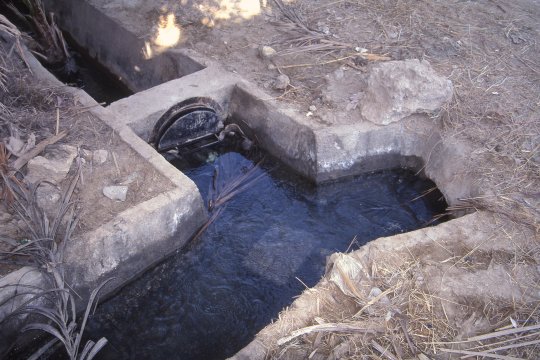 |
| .378. Whatever its source, though, the water is distributed throughout all or part of the oasis by a network of channels and measuring devices. (Siwa) |
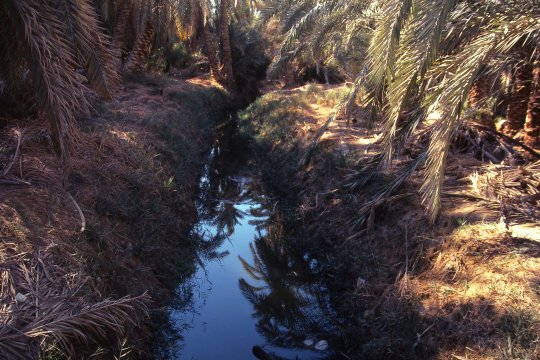 |
| .379. Most ditches are not lined; so10% of the water typically is lost by seepage before it reaches the roots of the palms. (Siwa) |
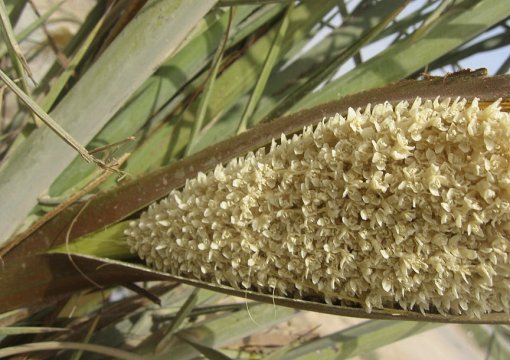 |
| .382. To save space and water in some oases, only one male date palm is allowed to survive for every ten females. This makes artificial fertilization necessary. The men cut the heavy flowers from the male palms and climb the female trees to shake pollen over the female flowers. This is called "marrying the palms". And, since it is seen as interfering with the work of Allah in creation, his help is invoked by prayers chanted throughout the pollination process. (Male flower: courtesy jeanbradbury at 1.bp.blogspot) |
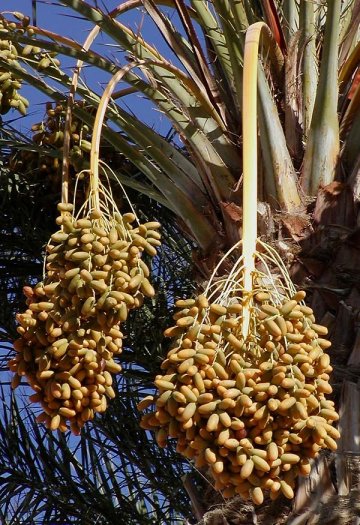 |
| .383. It is 5 or 6 years before a new date palm bears any fruit at all, and it won't come into full production till it is between 40 and 80 years old! But when properly irrigated -- every four days in winter and every second day in summer -- a single tree can yield between 60 and 100 kilograms of dates a year. (Courtesy Stan Shebs at: Wikipedia) |
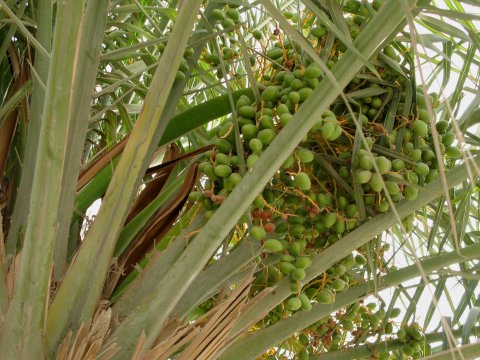 |
| .385. Every second year each palm must be manured. A deep hole will be dug around its roots then and filled with ten to twenty camel-loads of dung ... traditionally purchased from nomads. (Healthy immature fruit courtesy Wikipedia) |
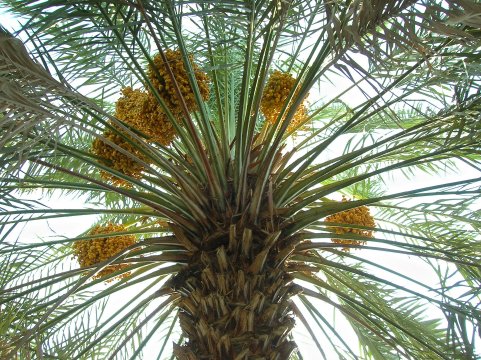 |
| .387. In addition to providing fruit -- eaten fresh or dried, raw or cooked, or used in the distillation of strong drink ("aragi") -- date palms have other uses. Their stones can be ground up and fed to camels, fibres from the leaves can be twisted into rope, and the trunks of dead trees are used to support the roofs of houses. (Courtesy Wikimedia) |
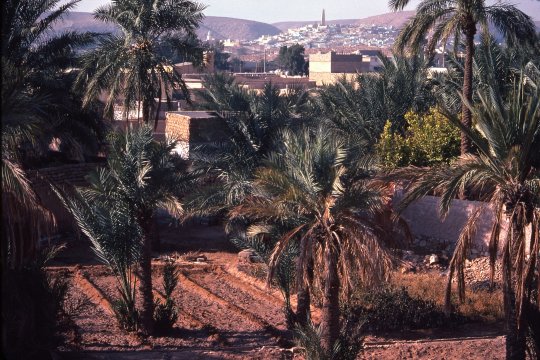 |
| .389. The palms also shade the crops that are grown beneath them, for nowhere can dates alone sustain the population: other crops are needed, especially cereals. (Ghardaia) |
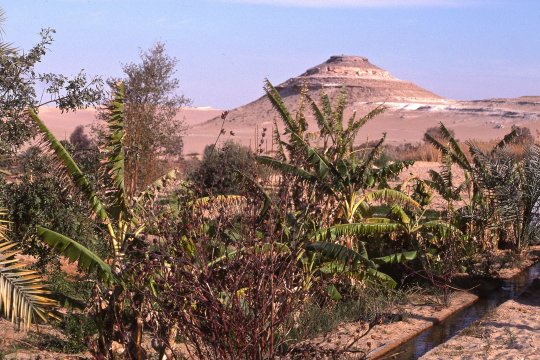 |
| .394. Most oases will also have a few fruit trees -- sometimes olives but more often figs, oranges, peaches, apricots, pomegranates, almonds and (in some places) bananas. (Bir Wahed) |

![]()
Text and photos by John Tyman
unless otherwise indicated.
Intended for Educational Use
Only.
Contact Dr. John Tyman at johntyman2@gmail.com
for more information regarding
licensing.
![]()
www.hillmanweb.com
Photo processing, Web page layout,
formatting and hosting by
William
Hillman ~ Brandon, Manitoba ~ Canada